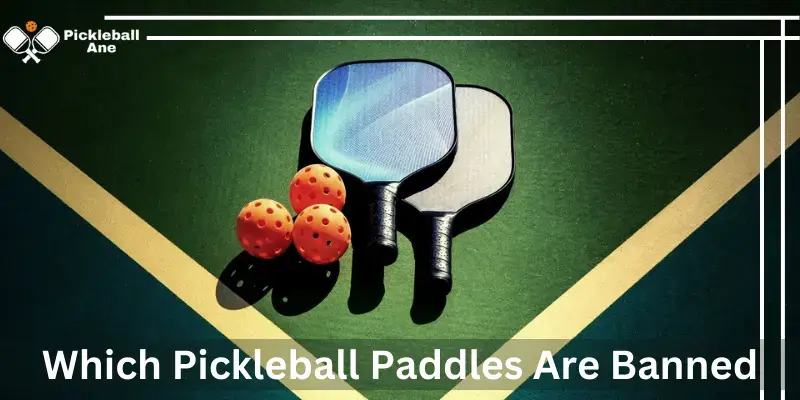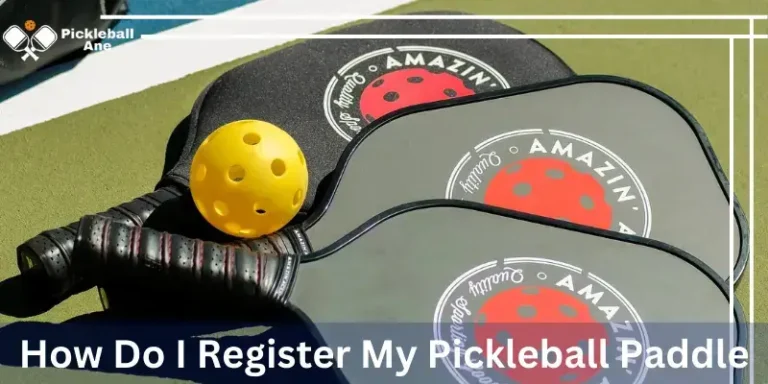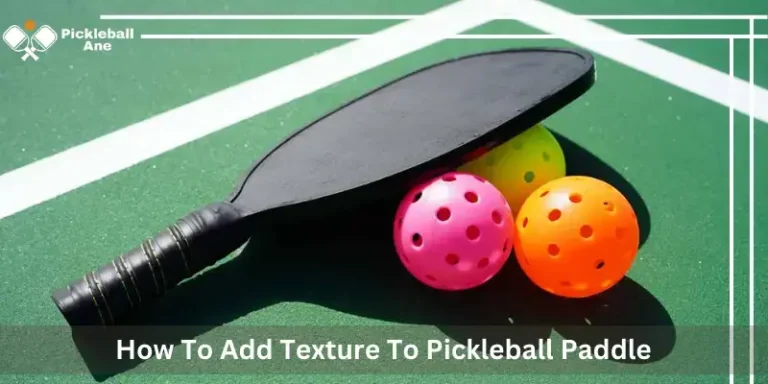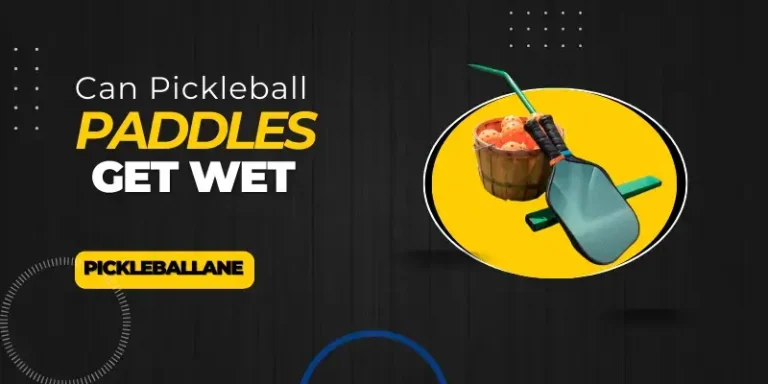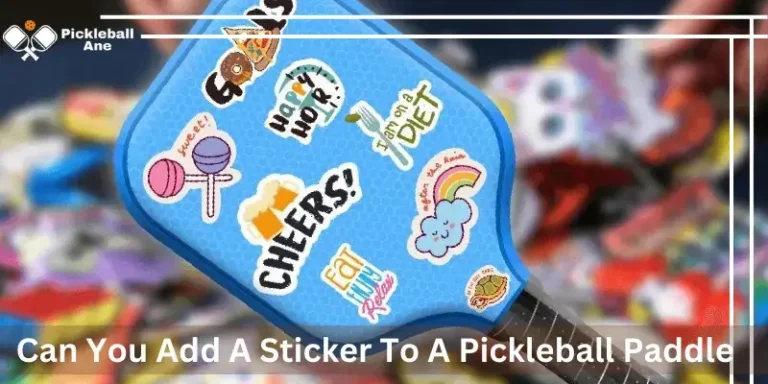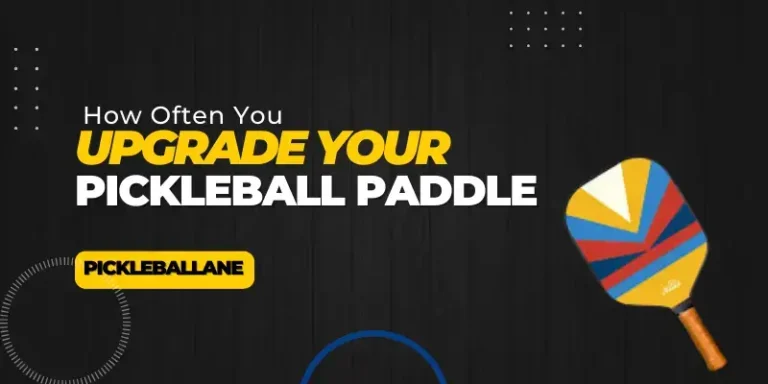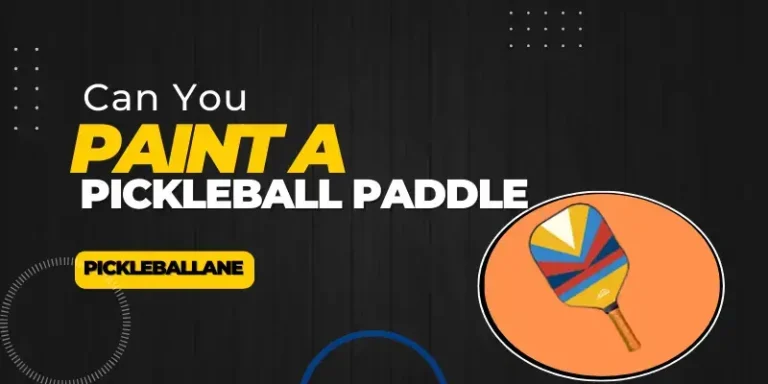Which Pickleball Paddles Are Banned || Complete Guide
Are you curious about why certain pickleball paddles are deemed off-limits? Join us as we unravel the mystery behind which pickleball paddles are banned.
Pickleball is a fun and popular sport, but did you know that not all pickleball paddles are allowed to be used in official tournaments? When choosing a paddle, make sure it meets the USAPA guidelines to avoid being banned from competition. Keep reading to find out which pickleball paddles are banned.
In my experience, there are a few pickleball paddles that have been banned in certain tournaments and leagues. These paddles usually have materials or designs that give players an unfair advantage over their opponents. Some common reasons for paddle bans include non-standard surfaces, overly large sweet spots, and excessive weight.
In this article, we will discuss the specific paddles that have been banned and why they were deemed illegal.
So Let’s Get started!
Reasons Why A Paddle Can Be Banned
There are several reasons why a pickleball paddle might be banned from official competitions.
Let’s take a closer look at these factors:
Non-Standard Surfaces
Some pickleball paddles have surfaces that are not allowed in official tournaments. These include rubber, cork, or sandpaper surfaces, which can give players an unfair advantage due to their increased grip and spin potential.
Rubber surfaces, for example, provide better control over the ball and allow for more precise shots. Similarly, cork and sandpaper surfaces create a stronger bond with the ball, making it easier to control and manipulate.
To maintain fairness in the game, these types of surfaces are not permitted in tournaments and will result in a banned paddle if used.
Overly Large Sweet Spots
The sweet spot on a pickleball paddle is the area where players can hit the ball with maximum power and accuracy.
Some paddles have been banned due to having an excessively large sweet spot, giving players an unfair advantage over their opponents.
A larger sweet spot allows for more consistent shots and reduces the chances of missing or mishitting the ball.
This gives players with these paddles a significant edge in the game, which is why they are not allowed in official competitions.
Excessive Weight
Another factor that can result in a paddle being banned is excessive weight. Certain paddles are significantly heavier than the standard weight limit set by the USAPA, giving players an unfair advantage due to the increased power behind their shots.
In addition, heavier paddles can also cause strain and fatigue on players during long matches, giving those with lighter paddles an advantage.
To maintain fairness and prevent any potential injuries, paddles that exceed the weight limit are not allowed in official tournaments.
How To Know If A Pickleball Paddle Is Banned?
Now that we have discussed the reasons why paddles can be banned, you may be wondering how to know if a paddle is allowed in official competitions or not.
The simplest way to ensure your pickleball paddle is not banned is to check the USAPA-approved list of paddles.
This list is regularly updated and includes all the paddles that are permitted in official tournaments. If your paddle is not on this list, it may be banned.
You can also check with the tournament director or league officials to confirm if your paddle is allowed before competing. It’s always better to double-check and avoid any potential disqualifications.
What Are The Popular Brands Of Banned Pickleball Paddles?
Some of the most popular brands that have banned paddles include:
1: Selkirk
Selkirk is a well-known pickleball brand that offers high-quality paddles. However, some of their paddles have been banned due to having non-standard surfaces like cork or sandpaper.
2: Paddletek
Another popular brand, Paddletek, has had a few of its paddles banned as well. These paddles exceeded the weight limit and were deemed too heavy for official competitions.
3: Onix
Onix is another well-known pickleball brand that has had a few of its paddles banned due to having an excessively large sweet spot or non-standard surfaces.
Pros And Cons Of Using A Banned Pickleball Paddle
Before choosing to use a banned pickleball paddle, it’s essential to consider the pros and cons.
Pros:
1: Increased Grip and Control
Banned paddles with non-standard surfaces provide better grip and control over the ball, allowing for more precise shots.
2: Better Spin Potential
Rubber, cork, or sandpaper surfaces can create a stronger bond with the ball, allowing players to generate more spin on their shots.
3: Larger Sweet Spot
Having an excessively large sweet spot can result in more consistent shots, giving players an edge over their opponents.
4: Increased Power
Some banned paddles may be heavier than the standard weight limit, resulting in increased power behind shots.
5: Unique Playing Style
Using a banned paddle can give players a unique playing style and potentially surprise their opponents.
6: Cost Savings
In some cases, banned paddles may be available at a lower cost due to their restricted use in official competitions.
Cons:
1: Risk of Disqualification
Using a banned paddle can result in disqualification from a tournament or league.
2: Potential Injuries
Excessively heavy paddles can lead to strain and fatigue on players, increasing the risk of injuries.
3: Limited Use
Banned paddles cannot be used in official competitions, limiting their use to recreational play only.
4: Unfair Advantage
Using a banned paddle gives players an unfair advantage over their opponents, going against the spirit of fair play in pickleball.
How Can You Tell If Your Paddle Is Legal?
To ensure your pickleball paddle is legal, you can follow these steps:
- Check the USAPA-approved list of paddles to see if your paddle is on the list.
- Look for the USAPA seal on your paddle, which indicates it has been approved for use in official competitions.
- Make sure your paddle meets the weight limit set by the USAPA (between 6.9 — 8.5 ounces). You can check the weight of your paddle using a scale.
- Inspect the surface of your paddle to ensure it does not have any non-standard materials like rubber, cork, or sandpaper.
If your paddle meets all these criteria, then it is likely legal for use in official tournaments.
Expert Tips For Choosing A Legal Pickleball Paddle
There are a few things to keep in mind when choosing a legal pickleball paddle:
1: Consider Your Playing Style
Your playing style can influence the type of paddle you choose. If you like to generate a lot of spins, then a paddle with a textured surface may be suitable for you.
2: Try Before You Buy
It’s always best to try out different paddles before purchasing one. This will give you an idea of how the paddle feels in your hands and if it suits your playing style.
3: Check The Weight
Make sure the weight of the paddle falls within the standard limit set by the USAPA. This will ensure fairness and prevent any potential injuries.
4: Consider Your Budget
Pickleball paddles come in a range of prices, so it’s essential to consider your budget before making a purchase. Keep in mind that illegal paddles may be available at lower costs due to their restricted use.
5: Research The Brand
Before purchasing a paddle, research the brand and read reviews from other players. This will give you an idea of the paddle’s quality and performance.
6: Check With Tournament Officials
If you plan on using the paddle in official competitions, it’s always best to check with tournament officials beforehand to ensure it is legal for use.
Conclusion
In conclusion, while some paddles may be banned from official pickleball competitions, there are still plenty of legal options available.
It’s essential to follow the rules and regulations set by the USAPA to ensure fair play and avoid any potential disqualifications.
Remember to always double-check if your paddle is allowed before competing to save yourself from any trouble. Additionally, choosing a legal pickleball paddle is crucial for maintaining a level playing field and promoting good sportsmanship in the game.
So make sure to do your research and choose a paddle that suits your playing style, and budget, and follows all the regulations set by the USAPA.
FAQs
1. What makes a pickleball paddle banned or illegal for play?
A pickleball paddle can be banned or deemed illegal for play if it doesn’t meet the criteria set by the USA Pickleball Association (USAPA) or other governing bodies. This can include factors like materials used, dimensions, and performance-enhancing features.
2. Are all non-USAPA-approved paddles considered banned?
Not necessarily. While paddles that do not have USAPA approval may not be allowed in official USAPA-sanctioned tournaments and events, they may still be used in non-sanctioned recreational play. However, checking local rules and regulations for specific venues or competitions is essential.
3. What common features could lead to a pickleball paddle being banned?
Pickleball paddles can be banned if they possess certain features that provide an unfair advantage or go against the USAPA guidelines. Common banned features include metal cores, excessive thickness, unconventional shapes, and textured surfaces significantly impacting ball spin.

